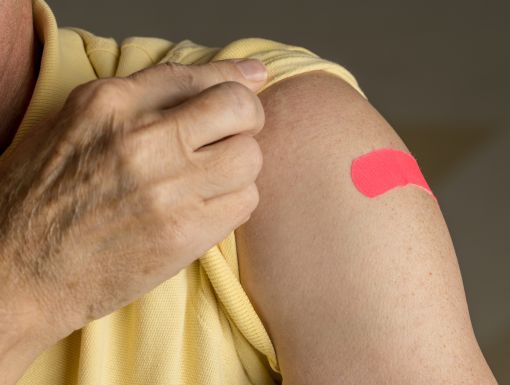
Flu vs. Cold: How to Tell the Difference
The common cold and the flu are both illnesses that can make you feel bad, but they have different symptoms and severity. The common cold usually causes a runny or stuffy nose, sore throat and mild cough, and the symptoms come on gradually. It's generally mild and doesn't make you feel very sick. The flu, on the other hand, hits you suddenly with a high fever, severe body aches, chills and extreme tiredness. The flu is caused by influenza viruses, which can lead to more serious health issues like pneumonia. While both are caused by viruses and spread similarly, the flu can make you much sicker than a cold. Understanding these differences can help you know what you're dealing with and how to treat it.
What causes a cold and the flu?
Common cold:
- The common cold is caused by viruses, most often rhinoviruses. Rhinovirus is a type of virus that thrive in the nose and throat, which is why they often lead to symptoms like a runny nose, sore throat, and sneezing.
- These viruses spread through tiny droplets in the air when someone coughs or sneezes.
- You can also catch a cold by touching surfaces with the virus and then touching your face.
Flu:
- The flu is caused by influenza viruses, which are different from the viruses that cause a cold.
- It spread through droplets in the air when an infected person coughs, sneezes or talks.
- You can also get the flu by touching surfaces with the virus and then touching your mouth, nose or eyes.
What are the signs and symptoms of a cold and the flu?
Common cold:
- Runny or stuffy nose
- Sore throat
- Mild cough
- Sneezing
- Mild headache
- Mild body aches
- Low-grade fever (sometimes)
- Fatigue
Flu:
- High fever
- Severe body aches
- Chills
- Extreme tiredness or fatigue
- Dry cough
- Sore throat
- Runny or stuffy nose (less common than with a cold)
- Headache
- Sometimes vomiting or diarrhea (more common in children)
How does a cold and the flu spread?
Common cold:
- Spread through tiny droplets in the air when someone with a cold coughs or sneezes.
- You can catch a cold by touching surfaces like door handles or phones that have the virus on them and then touching your face.
- Close contact with someone who has a cold, like shaking hands, can also spread the virus.
Flu:
- Transmitted through droplets in the air when an infected person coughs, sneezes or talks.
- You can get the flu by touching surfaces contaminated with the flu virus, like countertops or keyboards, and then touching your mouth, nose or eyes.
- Being near someone with the flu, especially in crowded places, increases the chance of catching the virus.
What is the severity of a cold and the flu?
Common cold:
- Symptoms are usually mild and manageable.
- Typically lasts about seven to ten days.
- Rarely leads to serious complications.
- Most people can continue with daily activities, though they may feel tired.
- Over-the-counter medications can help alleviate symptoms.
Flu:
- Symptoms are more severe and intense.
- Can last from a few days to two weeks.
- High risk of complications, especially for young children, elderly and people with weakened immune systems.
- Can lead to serious health issues like pneumonia, hospitalization or even death in severe cases.
- Requires rest and sometimes prescription medications to manage symptoms.
What is the treatment for a cold and the flu?
Common cold:
- Get plenty of rest.
- Drink lots of fluids like water and juice.
- Use over-the-counter medicines for symptoms like a runny nose, sore throat or headache.
- Use a humidifier to help with congestion.
- Gargle with salt water to soothe a sore throat.
Flu:
- Rest as much as possible to help your body fight the virus.
- Drink plenty of fluids to stay hydrated.
- Take over-the-counter medicines to relieve symptoms like fever, aches and congestion.
- Prescription antiviral medicines may be needed if prescribed by a doctor.
- Use a cool mist humidifier to ease breathing.
What is prevention for a cold and the flu?
Common cold:
- Wash your hands frequently with soap and water.
- Avoid close contact with people who are sick.
- Don’t touch your face, especially your eyes, nose and mouth.
- Use tissues when you cough or sneeze and throw them away immediately.
- Disinfect commonly touched surfaces like door handles and phones.
Flu:
- Consider getting an annual flu shot in consultation with your doctor.
- Wash your hands often with soap and water.
- Stay away from people who are sick.
- Avoid touching your face, especially your mouth, nose and eyes.
- Cover your mouth and nose with a tissue or your elbow when you cough or sneeze.
- Clean and disinfect frequently touched objects and surfaces.
The flu vaccine can lessen the severity of illness in the very young and very old, along with those with conditions such as hypertension, diabetes and chronic respiratory illnesses. Since the flu vaccine can decrease the severity of the illness, particularly those who are medically vulnerable, the flu vaccine can lead to decreased hospitalization and mortality.


